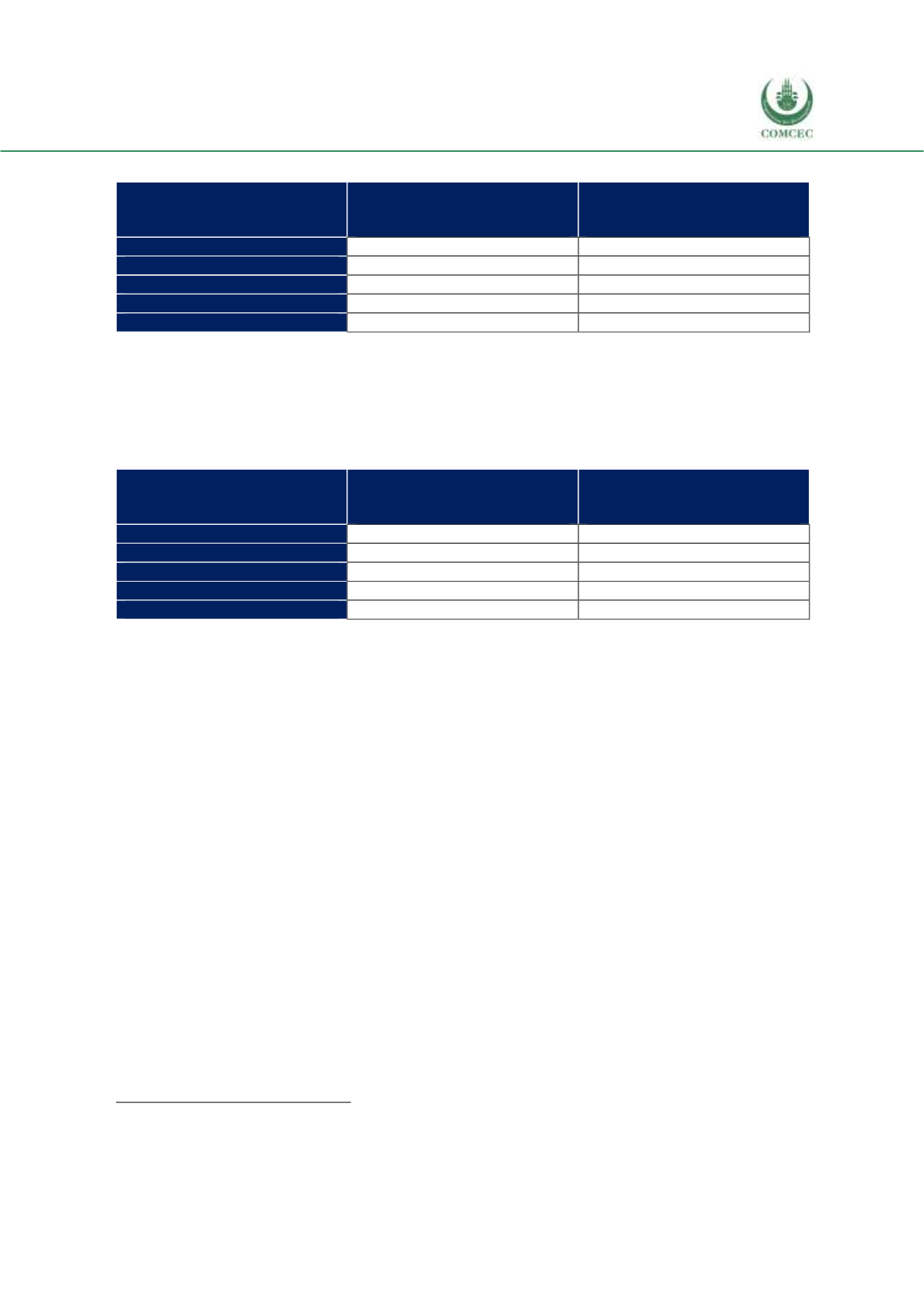

Reviewing Agricultural Trade Policies
To Promote Intra-OIC Agricultural Trade
81
Table 4. 5 Top 5 OIC Destination Countries for Turkey’s Top 5 Export Products
Importer OIC country
Value of agricultural exports
to the country, billion USD,
last 3-year average
% share in total agricultural
exports to the OIC countries,
last 3-year average
Iraq
2.3
43.7
Syria
0.5
8.9
Saudi Arabia
0.4
7.0
Iran
0.2
3.9
Sudan
0.2
3.1
Source: CEPII BACI, Eurostat RAMON, UN Comtrade, UN Trade Statistics, and authors’ calculations
Table 4.6 shows the first 5 markets from which Turkey purchases the highest agricultural
imports in the OIC market. Malaysia is the largest market for Turkey’s top five agricultural
product imports from OIC countries with a share of 24%, followed by Cote d’Ivoire,
Turkmenistan, Indonesia, and Nigeria.
Table 4. 6 Top 5 OIC Origin Countries of Turkey’s Top 5 Import Products
Exporter OIC country
Value of agricultural imports
from the country, billion USD,
last 3-year average
% share in total agricultural
imports from the OIC
countries, last 3-year average
Malaysia
0.4
24.0
Cote d'Ivoire
0.2
15.3
Turkmenistan
0.2
14.1
Indonesia
0.2
12.7
Nigeria
0.1
7.7
Source: CEPII BACI, Eurostat RAMON, UN Comtrade, UN Trade Statistics, and authors’ calculations
4.1.2. Agricultural Trade Policies in Turkey
Background
13
Turkey has signed the Ankara Agreement with the European Economic Community (EEC) in
1963. This agreement has had a Customs Union dimension that forced Turkey to gradually
prepare the economy to tariff reductions. The first two rounds of tariff reductions have been
implemented in 1973 and 1976, respectively. After years of negotiations, a Customs Union (CU)
between the EU and Turkey has been put into practice in January 1
st
1996.
The CU covers all manufactured goods, thereby implying the same tariff profiles for these goods
in terms of MFN duties between the EU and Turkey. On the other hand, the CU does not cover
primary agriculture from the very beginning. This allows Turkey to set tariffs higher than the
EU levels in certain products.
As a member of WTO since 1995, Turkey is bound to comply with the framework of the
Agreement on Agriculture. Tariff reductions have been applied since the mid-1990s, and Turkey
has also met commitments in Quantitative Restrictions and reductions in Export Subsidies.
Governments in Turkey have traditionally supported the agricultural sector using various
methods. Before the 2000s, government support purchases and credit subsidies have been
typical instruments, but a more market-oriented policy stance has been followed through the
Agricultural Reform Implementation Project from 2001 to 2008. The GDP share of total
13
Larson et al. (2015), the Turkish Exporters’ Assembly’s 2016 Agricultural Report written by Professors Erol Çakmak and
Haluk Kasnakoğlu, and COMCEC (2014b) are being followed in summarizing the background on agricultural trade policies in
Turkey.


















